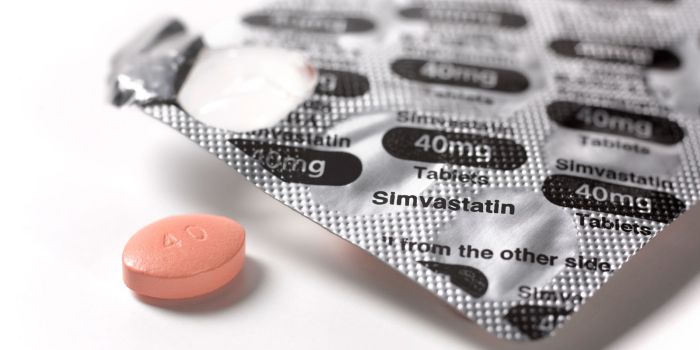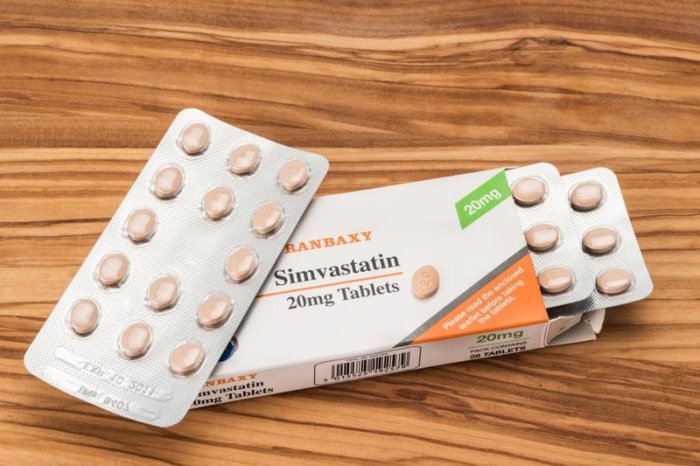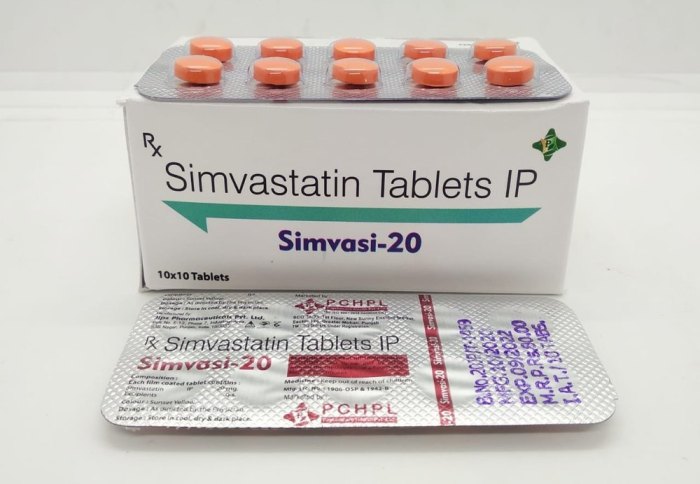Simvastatin uses are centered around managing cholesterol levels and preventing cardiovascular events. This statin medication, a powerful tool in the fight against heart disease, works by inhibiting the production of cholesterol in the liver. Discovered in the 1980s, simvastatin has become a cornerstone of cholesterol management, with its effectiveness and safety established through extensive research and clinical trials.
Available in various forms, including tablets and oral suspension, simvastatin is prescribed for individuals with high cholesterol (hyperlipidemia) and those at risk of developing cardiovascular complications. Its impact extends beyond lowering cholesterol, as it plays a crucial role in preventing heart attacks, strokes, and other cardiovascular events. Understanding the nuances of simvastatin use, including dosage, potential side effects, and interactions with other medications, is essential for maximizing its benefits and minimizing risks.
Primary Uses of Simvastatin

Simvastatin is a medication primarily prescribed for managing high cholesterol levels, also known as hyperlipidemia. It belongs to a class of drugs called statins, which work by inhibiting the production of cholesterol in the liver. This reduction in cholesterol levels helps lower the risk of heart disease and stroke.
Treatment of High Cholesterol
Simvastatin is used to treat a variety of high cholesterol conditions, including:
- Primary hypercholesterolemia: This is the most common type of high cholesterol, where the body produces too much cholesterol. Simvastatin can help reduce LDL (bad) cholesterol and raise HDL (good) cholesterol levels.
- Familial hypercholesterolemia: This is a genetic condition that causes very high cholesterol levels. Simvastatin is often used in combination with other treatments to manage this condition.
- Combined hyperlipidemia: This condition involves elevated levels of both LDL and triglycerides (another type of fat found in the blood). Simvastatin can help lower both types of fats.
Prevention of Cardiovascular Events, Simvastatin uses
Studies have shown that simvastatin can effectively prevent cardiovascular events, such as heart attacks and strokes, in individuals with high cholesterol. By reducing LDL cholesterol and improving HDL cholesterol levels, simvastatin helps lower the risk of plaque buildup in the arteries, which can lead to heart disease.
Guidelines for Simvastatin Use
The dosage and frequency of simvastatin use can vary depending on factors such as the patient’s age, risk factors, and underlying health conditions. Here are some general guidelines:
Age Groups
- Children and adolescents: Simvastatin is generally not recommended for children under the age of 10. However, it may be used in older children and adolescents with severe hypercholesterolemia, under the guidance of a healthcare professional.
- Adults: The starting dose of simvastatin for adults is typically 10-20 mg per day, taken once daily in the evening. The dosage may be adjusted based on the patient’s response to treatment.
- Older adults: Simvastatin may be used in older adults, but the dosage may need to be adjusted due to potential age-related changes in liver function.
Risk Categories
- Individuals with low risk: For individuals with low risk of heart disease, simvastatin may be used to lower cholesterol levels, but the decision to start treatment should be made on a case-by-case basis.
- Individuals with moderate risk: For individuals with moderate risk of heart disease, simvastatin is often recommended to lower cholesterol levels and reduce the risk of cardiovascular events.
- Individuals with high risk: For individuals with high risk of heart disease, simvastatin is typically prescribed to lower cholesterol levels and reduce the risk of cardiovascular events. In these cases, simvastatin may be used in combination with other medications, such as aspirin or blood thinners.
It is important to note that simvastatin should only be used under the guidance of a healthcare professional. They will determine the appropriate dosage and frequency of treatment based on your individual needs and risk factors.
Dosage and Administration

The dosage of simvastatin varies depending on the individual’s condition, age, and response to the medication. It is important to follow your doctor’s instructions carefully and to not adjust the dosage without consulting them.
Simvastatin is typically taken once a day, often in the evening. This is because cholesterol levels tend to be lower in the evening, and taking simvastatin at this time may help to lower cholesterol more effectively.
Timing of Administration
Simvastatin is best taken with the evening meal. This is because food helps to increase the absorption of the medication, which can lead to better cholesterol-lowering effects. However, if you experience any digestive upset after taking simvastatin with food, you may need to take it on an empty stomach.
Potential Side Effects and Risks: Simvastatin Uses

Simvastatin, like many medications, can cause side effects. While most people tolerate it well, some experience adverse reactions. Understanding these potential side effects and taking precautions can help minimize risks.
Common Side Effects
Common side effects of simvastatin include muscle pain, liver problems, and gastrointestinal issues.
- Muscle pain: This is the most common side effect, often described as muscle aches, tenderness, or weakness. It usually occurs in the legs and arms.
- Liver problems: Simvastatin can sometimes cause liver enzyme elevations, a sign of potential liver damage. However, this is usually mild and reversible upon stopping the medication.
- Gastrointestinal issues: Some people experience digestive discomfort, such as constipation, diarrhea, or stomach upset.
Rhabdomyolysis
Rhabdomyolysis is a serious condition where muscle tissue breaks down rapidly, releasing harmful substances into the bloodstream. It can lead to kidney failure and other complications.
- Risk Factors: Several factors can increase the risk of rhabdomyolysis, including:
- High doses of simvastatin: Higher doses increase the risk.
- Certain medical conditions: Kidney or liver problems, thyroid disease, and certain muscle disorders can heighten the risk.
- Concomitant medications: Using simvastatin with other medications, particularly those affecting the liver or muscles, can increase the risk.
- Alcohol consumption: Excessive alcohol use can increase the risk.
- Grapefruit juice: Grapefruit juice can interfere with the metabolism of simvastatin, leading to higher levels in the blood, which can increase the risk of rhabdomyolysis.
- Symptoms: Symptoms of rhabdomyolysis include muscle pain, weakness, dark urine, and fatigue. If you experience these symptoms, seek immediate medical attention.
Drug Interactions
Simvastatin can interact with other medications, including:
- Other cholesterol-lowering drugs: Combining simvastatin with other statins or fibrates can increase the risk of muscle problems.
- Certain antibiotics: Some antibiotics, like erythromycin and clarithromycin, can increase the levels of simvastatin in the blood, potentially increasing the risk of side effects.
- Anti-fungal medications: Certain anti-fungal medications, like itraconazole and ketoconazole, can also increase simvastatin levels.
- Immunosuppressants: Drugs used to suppress the immune system, such as cyclosporine and tacrolimus, can increase the risk of muscle problems when combined with simvastatin.
- Herbal supplements: Some herbal supplements, such as St. John’s wort and ginseng, can interact with simvastatin.
Simvastatin and Lifestyle Modifications
Simvastatin, a statin medication, is often prescribed to lower cholesterol levels and reduce the risk of heart disease. While medication plays a crucial role in managing cholesterol, lifestyle modifications are equally important and can significantly enhance the effectiveness of simvastatin therapy.
Heart-Healthy Diet
A heart-healthy diet is essential for managing cholesterol levels and overall cardiovascular health. This diet focuses on reducing saturated and trans fats, cholesterol, and sodium while increasing fiber, fruits, and vegetables. Here are some recommendations for a heart-healthy diet:
- Limit saturated and trans fats: These fats raise LDL (bad) cholesterol levels. Avoid fatty meats, full-fat dairy products, fried foods, and processed snacks.
- Choose lean protein sources: Opt for lean meats like chicken, fish, and beans.
- Increase fiber intake: Fiber helps lower LDL cholesterol. Include fruits, vegetables, whole grains, and legumes in your diet.
- Reduce sodium intake: Excess sodium can raise blood pressure. Limit processed foods, fast food, and restaurant meals.
- Choose healthy fats: Include monounsaturated and polyunsaturated fats, found in olive oil, avocados, nuts, and seeds.
Regular Physical Activity
Regular physical activity is crucial for lowering cholesterol levels and improving overall cardiovascular health. It helps increase HDL (good) cholesterol and reduce LDL cholesterol. Aim for at least 30 minutes of moderate-intensity exercise most days of the week. Examples include brisk walking, jogging, swimming, biking, and dancing.
“Physical activity can help lower LDL cholesterol and raise HDL cholesterol, even without weight loss.” – American Heart Association
Simvastatin and Pregnancy/Lactation
Simvastatin, like other statins, is categorized as a pregnancy category X drug, meaning it’s contraindicated during pregnancy. This means it’s considered unsafe for pregnant women and should be avoided. Simvastatin use during pregnancy has been associated with significant risks to the developing fetus.
Risks of Simvastatin Use During Pregnancy
Using simvastatin during pregnancy can pose serious risks to the developing fetus. It’s crucial to understand these risks and consider alternative options for managing cholesterol during pregnancy.
- Birth Defects: Studies have linked simvastatin use during pregnancy to an increased risk of birth defects, particularly affecting the heart and skeletal system.
- Miscarriage: Some studies suggest a possible association between simvastatin use and an increased risk of miscarriage.
- Premature Birth: There’s a potential link between simvastatin use and premature birth.
- Low Birth Weight: Simvastatin use during pregnancy might contribute to babies being born with a lower birth weight.
Simvastatin Use During Lactation
Simvastatin is also contraindicated during breastfeeding. While studies haven’t directly investigated the effects of simvastatin on infants through breast milk, the drug’s potential to cause birth defects and other complications makes it a significant risk. Simvastatin can pass into breast milk, and its potential effects on infants are unknown.
Alternatives to Simvastatin for Managing Cholesterol During Pregnancy and Breastfeeding
When managing cholesterol during pregnancy and breastfeeding, it’s essential to prioritize the health of both mother and child. There are alternative approaches that are generally considered safer:
- Lifestyle Modifications: Lifestyle changes, including a healthy diet, regular exercise, and weight management, are often the first-line approach to managing cholesterol during pregnancy and breastfeeding. These modifications can effectively lower cholesterol levels and minimize the need for medication.
- Other Medications: If lifestyle modifications aren’t enough, your healthcare provider might consider other medications, such as bile acid sequestrants or fibrates, which have a lower risk profile during pregnancy and breastfeeding compared to simvastatin. However, it’s crucial to discuss the potential risks and benefits of any medication with your healthcare provider.
Potential Effects of Simvastatin on Fetal Development and Infant Health
The potential effects of simvastatin on fetal development and infant health are a significant concern. Research suggests that simvastatin can cross the placenta and reach the developing fetus. This exposure can lead to various adverse effects, including:
- Cardiovascular Defects: Simvastatin has been linked to an increased risk of heart defects in infants.
- Skeletal Abnormalities: Simvastatin exposure during pregnancy can potentially contribute to skeletal abnormalities in infants.
- Other Developmental Issues: While research is ongoing, there’s a possibility that simvastatin exposure could impact other aspects of fetal development.
Simvastatin and Other Medications
Simvastatin, like many other medications, can interact with other drugs, potentially affecting their efficacy or increasing the risk of side effects. Understanding these interactions is crucial for healthcare professionals to ensure safe and effective treatment.
Drug Interactions with Simvastatin
It is essential to be aware of potential interactions between simvastatin and other medications. This information helps healthcare providers make informed decisions regarding medication management, minimizing the risk of adverse events.
| Drug Name | Drug Class | Potential Interaction with Simvastatin | Clinical Implications |
|---|---|---|---|
| Amiodarone | Antiarrhythmic | Increases simvastatin levels | Increased risk of myopathy and rhabdomyolysis |
| Clarithromycin | Macrolide antibiotic | Increases simvastatin levels | Increased risk of myopathy and rhabdomyolysis |
| Cyclosporine | Immunosuppressant | Increases simvastatin levels | Increased risk of myopathy and rhabdomyolysis |
| Erythromycin | Macrolide antibiotic | Increases simvastatin levels | Increased risk of myopathy and rhabdomyolysis |
| Fibrates (e.g., gemfibrozil, fenofibrate) | Lipid-lowering agents | Increases risk of myopathy and rhabdomyolysis | Avoid concurrent use whenever possible |
| Grapefruit juice | Food/beverage | Increases simvastatin levels | Increased risk of myopathy and rhabdomyolysis |
| Itraconazole | Antifungal | Increases simvastatin levels | Increased risk of myopathy and rhabdomyolysis |
| Ketoconazole | Antifungal | Increases simvastatin levels | Increased risk of myopathy and rhabdomyolysis |
| Niacin (nicotinic acid) | Lipid-lowering agent | Increases risk of myopathy and rhabdomyolysis | Monitor closely for muscle symptoms |
| Rifampin | Antibiotic | Decreases simvastatin levels | Reduced effectiveness of simvastatin |
| Statins (other than simvastatin) | Lipid-lowering agents | Increased risk of myopathy and rhabdomyolysis | Avoid concurrent use whenever possible |
Simvastatin, a powerful tool in the fight against heart disease, empowers individuals to take control of their cholesterol levels and reduce their risk of cardiovascular events. By understanding the mechanisms of action, potential side effects, and appropriate use of this medication, individuals can make informed decisions about their health and work collaboratively with healthcare providers to achieve optimal outcomes.
Simvastatin is a commonly prescribed medication used to lower cholesterol levels, helping to reduce the risk of heart disease. While simvastatin is generally well-tolerated, it’s important to be aware of potential side effects. It’s also worth noting that certain medications, like those used to treat attention-deficit/hyperactivity disorder (ADHD), such as Concerta, can also have side effects. You can learn more about these concerta side effects online.
Always consult with your doctor to discuss any concerns you may have about potential side effects of your medications, including simvastatin.